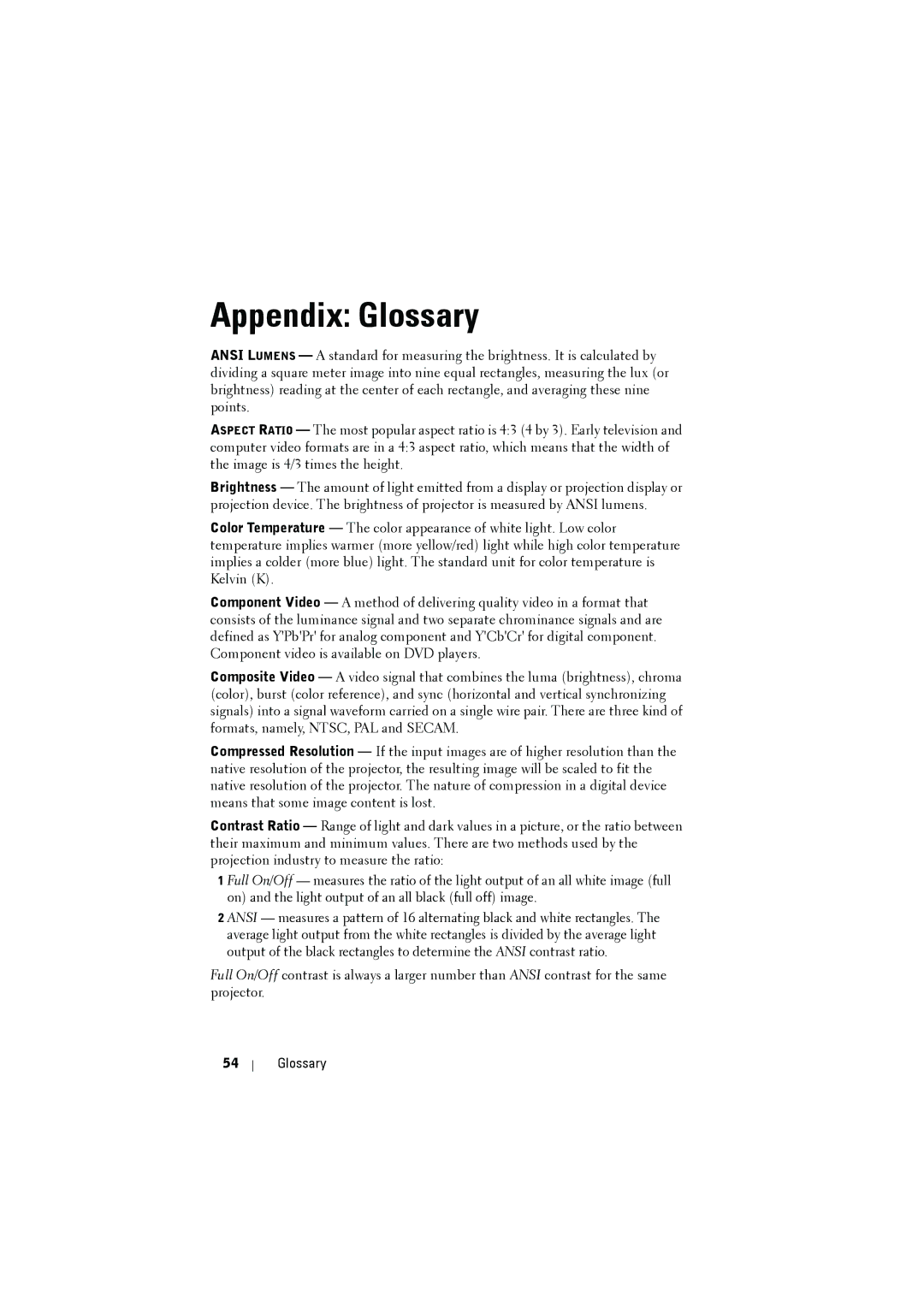1410X specifications
The Dell 1410X is a versatile and portable projector that was designed for business professionals and educational environments demanding reliability and high-quality performance. Despite being an older model, it has retained relevance due to its robust features and ease of use.One of the standout characteristics of the Dell 1410X is its impressive brightness level, capable of delivering up to 2500 ANSI lumens. This high brightness ensures that presentations can be viewed clearly in various lighting conditions, making it suitable for both darkened and well-lit rooms. Coupled with a contrast ratio of 2000:1, images and text appear sharp and vibrant, providing a professional edge to any presentation.
The projector supports a native XGA resolution of 1024 x 768 pixels, which is optimal for displaying detailed graphics, spreadsheets, and videos. Moreover, it is compatible with a range of resolutions, allowing it to accommodate different types of media without compromising quality. The Dell 1410X utilizes a DLP (Digital Light Processing) technology, which enhances color accuracy and provides smoother transitions, making it ideal for dynamic video content.
Portability is another significant advantage of the Dell 1410X. Weighing around 5.7 pounds, it is easy to transport between locations, fitting well within a standard laptop bag. This makes it a popular choice for traveling professionals, educators, and presenters who require mobility without sacrificing performance.
Connectivity options are plentiful, including an array of inputs like HDMI, VGA, and USB, allowing users to connect various devices such as laptops, gaming consoles, and digital cameras seamlessly. Its quick start-up and shutdown capabilities further enhance convenience by reducing downtime in fast-paced environments.
In terms of durability, the Dell 1410X is built with a sealed optical engine designed to prevent dust accumulation, which ensures longevity and consistent performance. This feature, combined with a long lamp life of approximately 4000 hours in standard mode, minimizes maintenance efforts and costs over its lifespan.
Overall, the Dell 1410X projector exemplifies a blend of portability, performance, and ease of use, making it a worthy investment for anyone looking to enhance their presentation experience. Its robust set of features continues to meet the needs of users seeking reliability and quality in their visual presentations.
